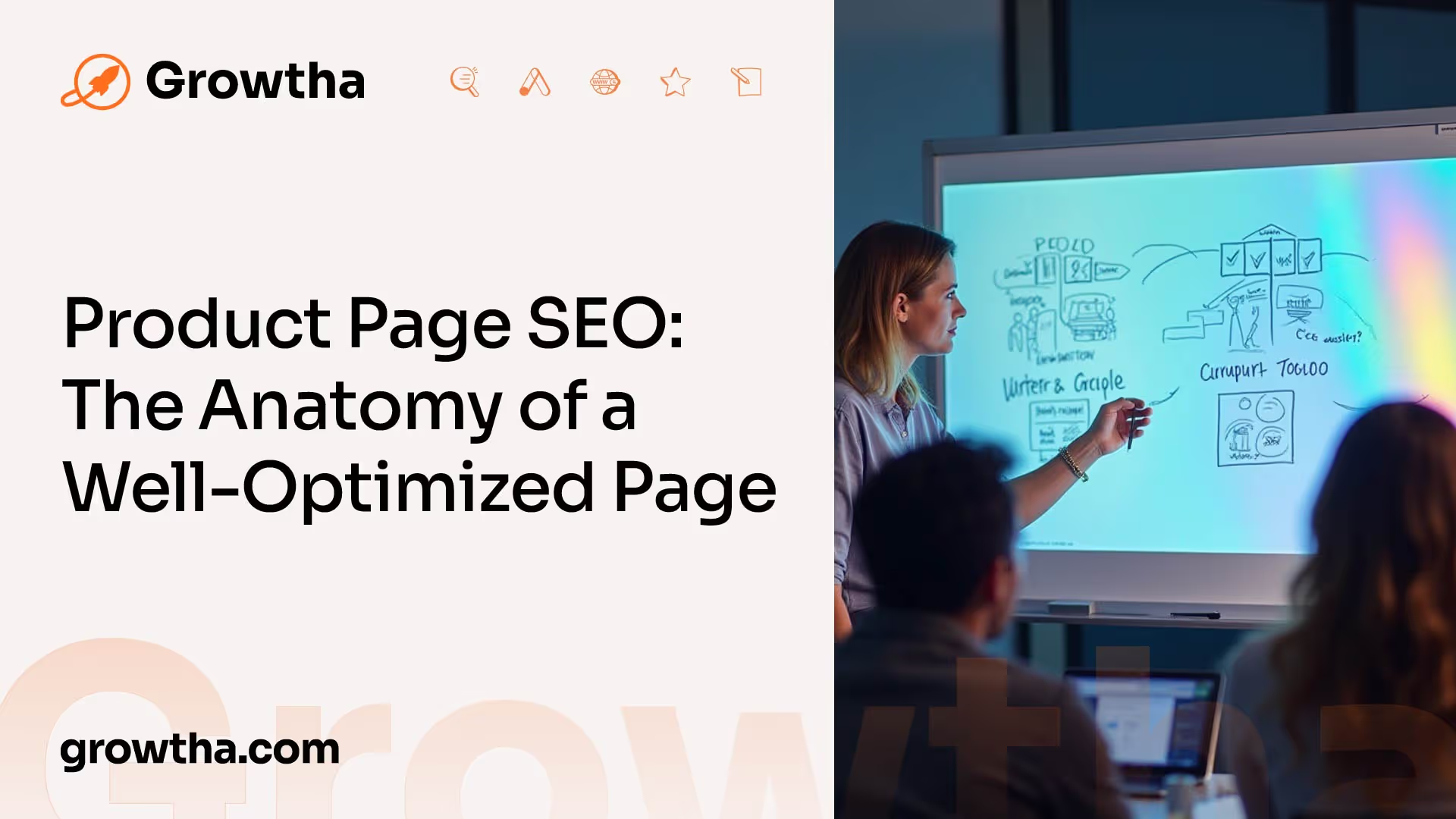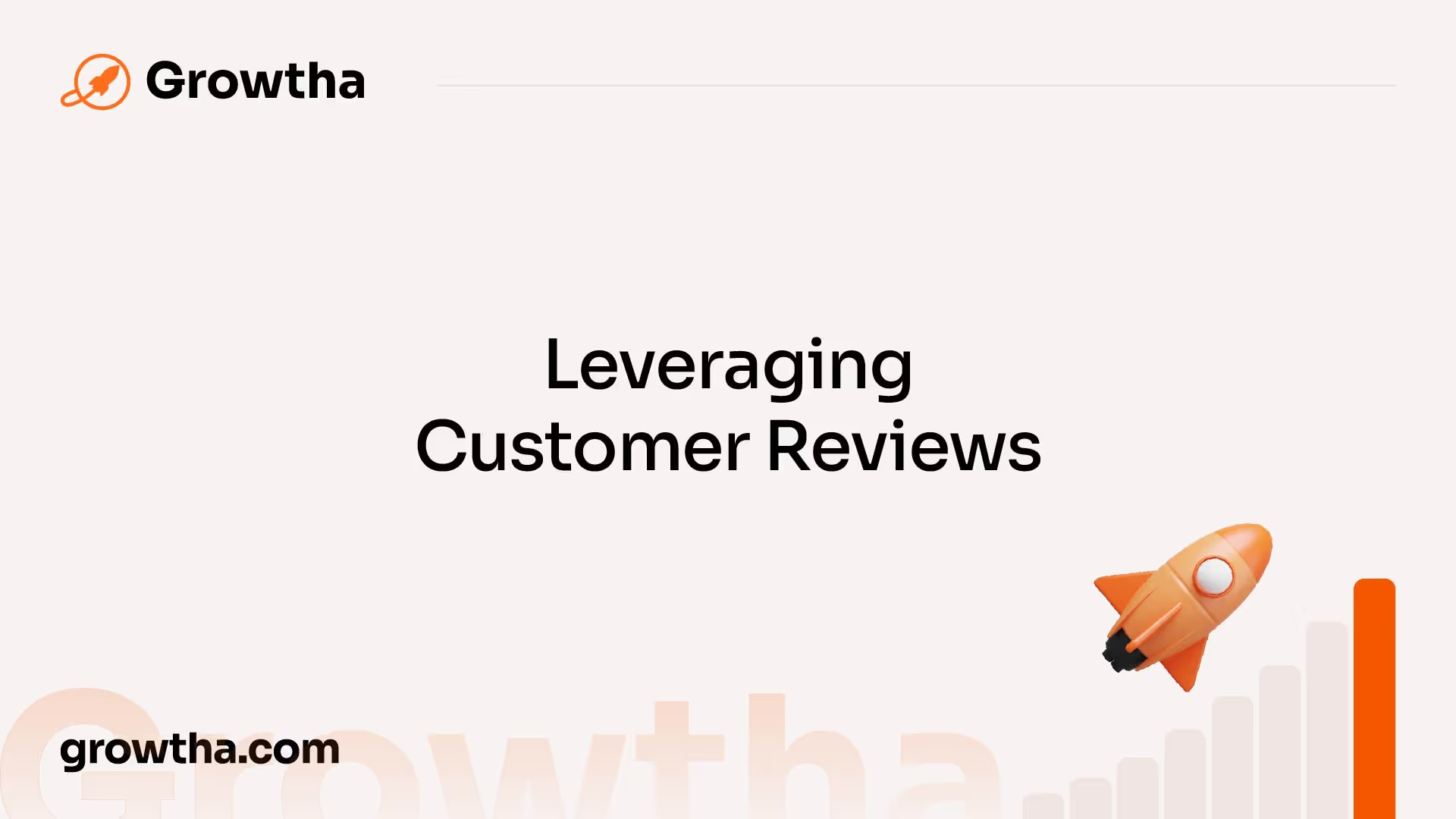Product Page SEO: The Anatomy of a Well-Optimized Page
Title tags play a crucial role in optimizing product pages for search engines and improving user experience.


Product Page SEO: The Anatomy of a Well-Optimized Page
Crafting Effective Title Tags

Title tags play a crucial role in optimizing product pages for search engines and improving user experience. Understanding the importance of title tags and how to strategically place keywords within them is essential for a well-optimized product page.
Importance of Title Tags
Title tags are critical HTML elements that specify the title of a web page. They serve multiple purposes, including informing search engines about the content of the page and displaying the title in search engine results. A well-crafted title tag can significantly impact the visibility and ranking of a product page.
By providing a concise and accurate description of the page's content, title tags help users understand what to expect when clicking on a search result. This improves the overall user experience and increases the likelihood of attracting relevant traffic to the product page.
Keyword Placement in Title Tags

When optimizing title tags, including important keywords is crucial. The consensus among marketers is to place the primary keyword as close to the start of the title tag as possible. This helps search engines understand the relevance of the page to specific search queries.
However, it's important to maintain a balance and avoid keyword stuffing. The title tag should flow naturally and be compelling to users. It is recommended to keep the length of title tags under the 60-character limit, although the limit is based on pixel width rather than an exact character count [1].
Additionally, it is crucial to ensure that each title tag is unique for every web page. This ensures relevance to the specific content of the page and helps avoid static titles across all web pages or identical titles for multiple product pages.
In summary, crafting effective title tags involves strategically placing important keywords while keeping the title concise, compelling, and relevant to the content of the product page. By optimizing title tags, you can enhance the visibility and ranking of your product pages in search engine results, ultimately driving more targeted traffic to your website.
Enhancing SEO with Page Titles

Page titles play a crucial role in optimizing product pages for search engines. They have a significant impact on search engine rankings and can be the first thing users see in search results. In this section, we will explore the difference between SEO titles and post titles, as well as the impact of SEO titles on rankings.
SEO Titles vs. Post Titles
It's important to understand the distinction between SEO titles and post titles. The SEO title is what users see in search results, while the post title (H1 heading) is the title displayed on the page itself after clicking on the SEO title.
The SEO title aims to attract clicks, drive traffic to the website, and impact rankings. Google uses the SEO title as a ranking factor, making it essential to reflect the page's topic and focus keyword [2]. On the other hand, the post title within the page should accurately represent the content and provide a clear heading for visitors.
It's worth noting that Google may sometimes display a different title in search result snippets than the one set by the user. This can occur when Google utilizes various elements on the page to decide the title shown in search results. Therefore, it's important to ensure that the content on the page aligns with the intended SEO title.
Impact of SEO Titles on Rankings
The SEO title plays a crucial role in determining a page's topic and relevance. It is one of the most important factors Google considers when ranking a page in search results. By optimizing the SEO title to include relevant keywords, businesses can increase their chances of ranking higher in search results and attracting organic traffic.
A well-optimized SEO title can also improve click-through rates (CTR) from search engine result pages (SERPs). When users see a compelling and relevant title in search results, they are more likely to click on the link and visit the product page. This increased CTR signals to search engines that the page is valuable and relevant, which can further boost its rankings.
To enhance SEO with page titles, it's crucial to choose descriptive and concise titles that accurately represent the content of the page. Incorporating relevant keywords in the SEO title can help search engines understand the page's topic and improve its visibility in SERPs.
By understanding the importance of SEO titles and their impact on search engine rankings, businesses can optimize their product pages to attract more organic traffic and increase their online visibility.
Leveraging Customer Reviews

Customer reviews play a crucial role in the success of a product page. They not only influence the purchasing decisions of potential customers but also have a significant impact on search engine optimization (SEO) efforts. In this section, we will explore the influence of customer reviews and the importance of responding to them.
Influence of Customer Reviews
According to ESW, 95% of consumers consult customer reviews before making a purchase. This statistic highlights the importance of reviews in informing shopping behavior. When potential customers see positive reviews from satisfied buyers, it builds trust and confidence in the product.
From an SEO perspective, customer reviews can also improve a brand's rankings on search engines. Google's algorithm takes into account the presence of consumer reviews when determining the relevance and credibility of a page. Pages with customer reviews tend to receive higher rankings in search engine results, increasing their visibility and potential for organic traffic.
To maximize the impact of customer reviews on SEO, it is beneficial to display them prominently on key landing pages. By using review widgets, reviews can be showcased on the product page itself, increasing the frequency of appearances in organic search results [4].
Responding to Reviews
Responding to customer reviews, both positive and negative, is essential for building customer trust and maintaining a positive brand image. According to ESW, 52% of customers expect a response to their reviews within an hour. Timely responses show that the brand values customer feedback and is actively engaged in addressing their concerns.
When responding to positive reviews, express gratitude to the customer for their support and share their positive experience with other potential customers. This not only strengthens the relationship with the existing customer but also encourages others to leave positive reviews.
Negative reviews should also be addressed promptly and thoughtfully. Acknowledge the customer's concerns, apologize if necessary, and offer a resolution or steps to rectify the situation. This demonstrates a commitment to customer satisfaction and can potentially turn a dissatisfied customer into a loyal one.
Additionally, actively soliciting reviews from customers can greatly impact the number of customer reviews received. 70% of people asked to leave a review will do so. Implement strategies to encourage customers to share their feedback, such as post-purchase emails or incentives for leaving reviews.
By leveraging customer reviews and actively engaging with them, businesses can not only enhance their reputation and credibility but also improve their SEO efforts. The influence of customer reviews on potential customers' purchasing decisions and their impact on search engine rankings make them an essential component of a well-optimized product page.
The Power of Structured Data

Structured data is a powerful tool that can greatly enhance the optimization of product pages. By implementing structured data markup, website owners can provide search engines with additional information about their products, leading to improved visibility and potential enhancements in search results. Let's explore the benefits of structured data and the importance of implementing schema markup.
Benefits of Structured Data
Structured data markup plays a crucial role in helping web crawlers understand the most important content on a webpage [5]. It uses predefined categories and definitions to provide a standardized format for presenting information. By utilizing structured data, websites become eligible for rich results and can illustrate relationships between pages, authors, and semantic entities.
The advantages of implementing structured data for SEO are numerous. Firstly, it allows search engines like Google to choose different elements from each webpage and generate unique, enhanced search engine results page (SERP) features called "rich results". These rich results can include additional information, such as product prices, ratings, and availability, which can significantly improve click-through rates and drive more visitors to a website.
Structured data also helps in standardizing content across the web. This standardization enables search engines to better understand and interpret the meaning of the information on a webpage, not just the words themselves. By providing this additional context, websites can gain a competitive advantage in SEO, as their content becomes eligible for rich results and better defines website entities for semantic and AI-powered generative search.
Moreover, valid structured data helps organize content, making it more accessible to search engines and other programs. By prioritizing high-value content for search engine crawling and drawing connections between entities across a site and the wider web, structured data can significantly improve the visibility and relevance of product pages. Additionally, implementing structured data can future-proof a website, ensuring that it remains compatible with potential new rich results added by Google in the future.
Implementing Schema Markup
To take advantage of structured data's benefits, websites can implement a markup language called schema markup. Schema markup provides a standardized format for structuring data on webpages and allows search engines to better understand the content and context of the information.
Schema markup uses specific tags to label and categorize different elements on a webpage, such as product names, descriptions, prices, and reviews. By including this markup in the HTML code of a product page, website owners provide search engines with valuable information about the page's content and its relationship to other entities.
Implementing schema markup involves adding the appropriate schema.org vocabulary to the HTML code. This vocabulary provides a comprehensive set of tags and properties that define the structured data elements on a webpage. Website owners can utilize the available schemas relevant to their products and follow the guidelines provided by schema.org to ensure proper implementation.
By incorporating schema markup into product pages, website owners can maximize the visibility and relevance of their products in search results. Structured data allows search engines to showcase products within dedicated search features, potentially enhancing visibility above traditional listings. This can greatly benefit websites looking to boost their rankings and attract more organic traffic to their product pages.
In conclusion, structured data and schema markup are powerful tools for optimizing product pages. By providing search engines with additional information about products and their attributes, structured data enhances the visibility and relevance of product pages in search results. Implementing schema markup ensures that websites can take full advantage of the benefits that structured data brings, ultimately helping to boost rankings and drive more traffic to product pages.
Optimizing Product Images
When it comes to creating a well-optimized product page, optimizing product images is an essential aspect that should not be overlooked. High-quality product photos play a significant role in engaging customers, establishing credibility, and ultimately improving conversion rates for ecommerce brands. In this section, we will explore the importance of product photos and how to optimize them for SEO.
Importance of Product Photos
Quality product images have consistently proven to be influential in driving sales and reducing returns. In a survey, 75% of respondents stated that product images were "very influential" in their purchase decisions, while 22% reported returning items because they looked different in person than in the photo [6].
Clear, visually appealing product images capture customers' attention, inspire trust, and provide them with a better understanding of the product they are considering. They allow customers to inspect details, visualize the product in use, and gain confidence in their purchasing decision. On the other hand, poor-quality or misleading images can hinder conversions by distracting customers and creating uncertainty.
Image Optimization for SEO
Optimizing product images for SEO goes beyond visual appeal. By implementing the following techniques, you can enhance the visibility of your product pages in search engine results and drive organic search traffic:
- File Names and Alt Tags: When saving your product images, use descriptive file names that include relevant keywords. Additionally, assign alt tags to each image, providing concise and accurate descriptions. Alt tags not only assist visually impaired individuals in understanding the content of the image but also help search engines comprehend the image's context and relevance. Including keywords in alt tags can improve the chances of your product images appearing in relevant search results.
- Image Size and Compression: Large image files can slow down page loading times, negatively impacting user experience and SEO. It's important to optimize your product images by compressing them without sacrificing quality. Balancing image size and quality ensures faster page loading speeds, which is crucial for both user engagement and search engine rankings.
- Variety of Images: Providing a range of product images can enhance the customer experience and increase conversion rates. Consider including lifestyle images, usage inspiration images, customer images, textural images, compatibility images, and size proportion images. This variety caters to different customer needs, provides comprehensive information about the product, and helps customers visualize the product in different contexts.
By optimizing your product images with relevant file names, alt tags, and compressed file sizes, you can improve their visibility in search engine results. Additionally, providing a variety of high-quality images enhances the overall customer experience, builds trust, and increases the likelihood of conversions. Remember, product images are not only essential for engaging customers but also play a crucial role in boosting your SEO efforts.
Elevating Product Descriptions
Product descriptions play a critical role in the success of an ecommerce website. Well-optimized product descriptions not only provide valuable information to potential customers but also improve search engine visibility and rankings. In this section, we will explore the importance of SEO-friendly descriptions and how to effectively use keywords within them.
SEO-Friendly Descriptions
SEO product descriptions are specifically crafted to enhance a website's visibility in search engines like Google. These descriptions are used on ecommerce websites that sell products online, such as clothes or toys, and incorporate special words and phrases that people might use when searching for those items online [7].
One of the key benefits of SEO-friendly product descriptions is improved search engine ranking. By including relevant keywords in the descriptions, websites can rank higher in search results, drive organic traffic, and increase visibility in search engine results pages (SERPs). Additionally, well-written and informative product descriptions enhance the user experience on ecommerce sites by providing value to potential customers and improving their overall shopping experience. This can lead to increased trust, credibility, and ultimately higher conversion rates [7].
To create SEO-friendly descriptions, it is crucial to consider the target audience and their search intent. Understand the specific keywords and phrases that potential customers are likely to use when searching for products similar to yours. By incorporating these keywords naturally into your product descriptions, you can effectively communicate the relevance of your products to both users and search engines.
Using Keywords in Descriptions
The strategic use of keywords in product descriptions can significantly impact search engine rankings. When selecting keywords, it is recommended to focus on more specific terms, even if their search volumes are lower. These specific keywords tend to have lower keyword difficulty scores and attract highly targeted traffic [8].
When incorporating keywords into your descriptions, make sure they appear naturally within the text. Avoid keyword stuffing, as search engines may penalize websites for this practice. Instead, aim for a balanced and informative description that seamlessly integrates relevant keywords.
In addition to keywords, it's important to consider the tone of voice used in your product descriptions. Choosing the right tone and maintaining consistency throughout your website can help build a strong brand identity and engage your target audience. Tools like Semrush's SEO Writing Assistant can assist in maintaining the desired tone of voice in your content [8].
By crafting SEO-friendly product descriptions and strategically incorporating keywords, you can optimize your product pages for improved search engine rankings, attract highly targeted traffic, and provide potential customers with valuable information about your products. Remember to focus on relevancy, user experience, and maintaining a consistent brand voice to maximize the impact of your product descriptions.
References
[1]: https://www.clickminded.com/website-html-title-tags/
[2]: https://yoast.com/page-titles-seo/
[3]: https://esw.com/blog/ecommerce-customer-reviews-why-theyre-important-and-how-to-design-them/
[4]: https://searchengineland.com/how-customer-reviews-can-improve-your-seo-efforts-378252
[5]: https://www.wix.com/seo/learn/resource/structured-data-for-seo
[6]: https://thegood.com/insights/product-image-conversions/
[7]: https://www.shopify.com/enterprise/blog/seo-product-descriptions







